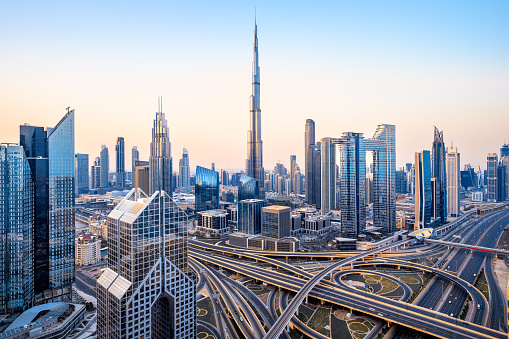
Dubai Airport: A Marvel of Aviation in the Heart of the Middle East
Dubai International Airport, known simply as DXB, is not just an airport; it’s a symbol of Dubai’s rapid growth and its status as a global hub connecting the East with the West. As one of the busiest airports in the world, DXB reflects Dubai’s opulence and its strategic significance in global aviation.
A Brief History
DXB’s journey began in 1960 when it was opened to support the then-small Dubai’s aviation requirements. The airport’s transformation mirrors the city’s own metamorphosis from a modest trading post to a bustling metropolis. Over the years, DXB has expanded and modernized to accommodate the growing influx of international travelers and cargo.
World-Class Facilities
- Terminals and Concourses: Dubai Airport comprises three terminals, with Terminal 3 being one of the largest in the world. It also features luxurious concourses, designed to provide a seamless and comfortable experience for travelers.
- State-of-the-Art Amenities: From duty-free shopping arenas, dining options, lounges, to sleeping pods, DXB offers a range of facilities that cater to the needs of diverse travelers.
- Connectivity: The airport serves over 240 destinations across six continents, operated by more than 140 airlines, making it a critical node in international air travel.
Record-Breaking Achievements
- Passenger Traffic: DXB consistently ranks among the top three busiest airports globally by international passenger traffic.
- Cargo Handling: The airport is also a major cargo hub, handling millions of tons of freight annually, emphasizing Dubai’s role in global trade and logistics.
Architectural Marvel
- Architectural Design: The airport’s design reflects Dubai’s futuristic vision, with expansive terminals, soaring ceilings, and state-of-the-art facilities. The architecture blends modern aesthetics with traditional Emirati elements, symbolizing Dubai’s cultural heritage and forward-looking ethos.
- Sustainability Initiatives: DXB is committed to sustainable operations, implementing various eco-friendly practices and aiming to reduce its carbon footprint.
Economic Impact
- Economic Hub: The airport significantly contributes to Dubai’s economy, supporting thousands of jobs and driving tourism and commerce.
- Business and Transit Hub: DXB serves as a pivotal transit point for global travelers, especially between Europe, Asia, and Africa, bolstering Dubai’s position as a key business and tourism destination.
Innovative Technologies
- Smart Airport Features: Embracing technology, DXB offers smart gates for speedy immigration, advanced baggage handling systems, and digital services to enhance passenger experiences.
- Future Expansion Plans: The airport continuously evolves, with plans for further expansion to increase capacity and incorporate more innovative technologies.
Cultural and Recreational Aspects
- Art and Culture: Reflecting Dubai’s cultural richness, the airport showcases art installations and hosts cultural events, providing a glimpse into the Emirati heritage and lifestyle.
- Leisure and Relaxation: With premium lounges, spas, and a range of entertainment options, DXB ensures a relaxing and enjoyable experience for transit passengers.
Challenges and Adaptability
- Handling the Pandemic: In response to the COVID-19 pandemic, DXB implemented stringent safety measures, showcasing its adaptability and commitment to passenger safety.
- Adapting to Changing Aviation Trends: The airport continues to adapt to the evolving needs of global aviation, focusing on sustainability, passenger comfort, and operational efficiency.
Dubai International Airport stands as a testament to Dubai’s ambition and its pivotal role in connecting the world. Its blend of luxury, efficiency, and innovation makes it more than just an airport—it’s a destination in itself, reflecting the dynamic spirit of Dubai.

0 comments